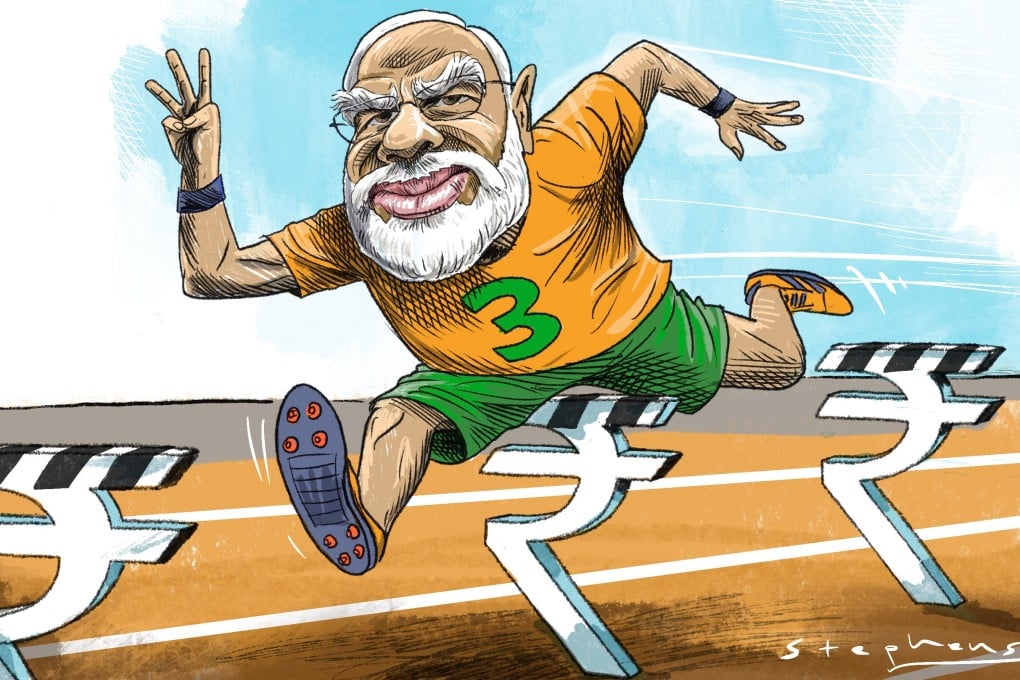Advertisement
Opinion | Why India’s Modi looks set for a third term despite economic concerns
- Recent successes in state elections indicate that India’s prime minister and his party are well positioned for victory in next year’s national elections
- Concerns about inflation, youth unemployment and rural inequality remain, but the opposition is struggling to mount a concerted challenge
Reading Time:4 minutes
Why you can trust SCMP

As India braces for next year’s national elections, all eyes are on Prime Minister Narendra Modi, who seems to be heading for a third term as leader of the world’s largest democracy of about 1.4 billion people and more than 900 million eligible voters. Following his Bharatiya Janata Party’s (BJP) recent victories in crucial state elections in Madhya Pradesh, Rajasthan and Chhattisgarh, Modi has cemented his position as the clear front runner.
Advertisement
In the face of a slowing economy and unemployment rising to around 10 per cent, the BJP relies on Modi’s nationalist populism for electoral victory. According to a recent survey, 52 per cent of respondents wanted Modi to continue to lead India. However, securing a third term requires Modi to expand his voter appeal, addressing anti-incumbency sentiment.
In the past, ruling parties have typically fallen prey to overconfidence. In 2004, the then-incumbent BJP launched an “India Shining” campaign to trumpet the country’s economic growth. As party members gleefully counted down the days to polls opening, confident of securing re-election, angry undercurrents were already percolating, especially across rural areas. When results came in, the BJP was defeated by a rural-backed coalition which tapped into pervasive feelings of deprivation and neglect beneath surface-level economic advances.
Learning lessons from history, Modi has avoided a repeat of this strategy, instead promoting inclusive development. Flagship schemes such as distributing 80 million free gas connections to poor households, rural electrification and more than 21 million houses completed in rural areas resonate more than previous elite-centric campaigns.
He champions a vision of “sabka saath, sabka vikas, sabka vishwas” (“with everyone, for everyone’s progress, with everyone’s trust”), welcoming marginalised groups into the national project instead of catering mostly to urban elites. Will this be enough to overcome the hurdles in his path?
Advertisement
Under Modi, “Hindutva 2.0” signifies a contemporary evolution of Hindu nationalism, emphasising cultural pride and India’s distinct Hindu identity. In the political arena, Modi strategically employs issues such as Kashmir and citizenship to mobilise supporters, navigating religious complexities.

Advertisement
